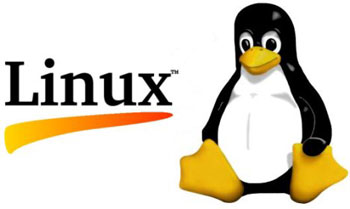Linux Tricks — Why Linux’s Flexibility Makes It a Top Operating System
Linux is a flexible operating system that users enjoy working with. However, sometimes, completing a task on Linux requires complex steps or executing complex instructions, which can be done in other ways and be just as fun as Linux.
If you are a professional Linux user looking for faster execution tricks, or a beginner wanting to learn the tricks of working fast with this operating system from the very beginning, join us.
Ubuntu
One of the most popular Linux distributions is Ubuntu. If you have not yet worked with Linux, we suggest you visit the link below and read it online before continuing.
http://www.ubuntu.com/tour/en
Middle-click to paste
in Linux gives you two caches (Clipboard) by default. One of these memories is the regular memory that you can use using the Cut, Copy, and Paste options (shortcut keys Ctrl + X, Ctrl + C, and Ctrl + V)
Another memory many users are unaware of is activated when you drag and drop text with the mouse. By doing this, the selected text is saved in a special memory, and you can press the middle mouse button in any text editor where you need this text.
Quick command
Did you know it can also issue commands for activities other than the terminal? Press the Alt + F2 shortcut keys on the keyboard to display the Run window. (This feature is supported on most Desktop environments including Unity, GNOME, and KDE). You can now quickly type the command and press Enter to execute it.
Note: The quick command feature differs from the search feature, which lets you type and run software names.
Replacing Virtual Consoles
Linux distributors generally provide users with several virtual consoles, each with its own characteristics. For example, one console contains a Desktop environment, while the other is a text type. If you are a professional Linux user and want to move between these virtual consoles, you can use the shortcut keys Ctrl + Alt + FX (FX can be one of the keys F1 to F12).
For example, pressing Ctrl + Alt + F1 opens the first virtual console, and many Linux distributors have designed the Ctrl + Alt + F7 keys to access the virtual Desktop console.
Search and activate brilliant menus.
Using the HUD (heads-up display) in the Ubuntu Unity tool, you can use the keyboard to quickly search for and activate the menus you want in various applications. For example, you can enable the different menu options associated with this book by searching for bookmarks in Firefox.
To do this, press the Alt key on the keyboard in the desired software and type the relevant phrase in the search box. Finally, scroll up or down with the control keys, and after selecting the desired menu, press the Enter key to start the menu activation operation. (HUD feature first introduced on Ubuntu 04/12).
Running the terminal quickly
Working with Linux requires terminal tools; every user is undoubtedly familiar with this tool. The terminal executes your various commands in Linux and is one of the most essential tools in this operating system.
If you are one of the users who use the terminal more than any other Linux tool, we suggest you use the shortcut keys Ctrl + Alt + T for faster access.
Of course, these shortcuts can be changed by you to other keys, and you can even view and change other shortcuts in the Linux operating system. You can define a shortcut to execute a command or script in many Desktop distributions.
(Accessing the list of shortcuts and managing them in Ubuntu is possible by running the keyboard shortcut by Dash and selecting the shortcuts tab.)

Desktop Management
Workspace in Linux allows you to group your various activities and applications into separate desktops, thus arranging your tasks.
There are several ways to move between desktops and move windows between them, including:
Click the Workspaces option in the panel to switch between desktops or view an overview of existing desktops (in this section, you can drag and drop windows between desktops).
Right-click the window title bar and use the Move to Workspace option to move the window from Desktop to Desktop.
– Press Ctrl + Alt shortcut keys on the keyboard and use the control keys (left, right, up, down) to move between desktops.
Press the shortcut keys Ctrl + Alt + Shift and use the control keys to move a window from one Desktop to another.
Automatic shutdown
If you are using Ubuntu, you can easily set your computer to shut down at a specified time with a simple, short command line.
To use this feature, after running the terminal, type the following command and press the Enter key:
Sudo shutdown -h + m
Note that in the above command, you should specify the time required in minutes instead of m +. For example, entering 60+ will shut down your computer after 60 minutes.
If you want your computer to shut down at a specific time, you can also use the following command:
Sudo shutdown -h hh: mm
In this command, you must enter the desired clock instead of the phrase hh: mm. For example, entering 23:10 will turn off your computer at 11:10 PM.
Note: After entering the shutdown command in the terminal and pressing Enter, you must also enter the system password and minimize the terminal window.
Deactivation: If you want to deactivate the automatic shutdown feature, you can get help from the following command:
sSudoshutdown –c
Active Processes
Another feature that Ubuntu gives you is the ability to display active processes with a very short command.
If you want to have more control over the operating system and its running processes, we recommend using the following command in the terminal:
ps –aux
Touchpad Tricks
If you have Ubuntu or other Linux distributions installed on your laptop, you can use the tricks that work with the Touchpad. For example, you can scroll the page vertically by swiping the Touchpad and down on the right corner of the Touchpad, or you can scroll the page horizontally by dragging the Touchpad along the bottom edge of the Touchpad.
You can also right-click by tapping the bottom right Touchpad of the Touchpad.
(Depending on your Linux distribution, you may want to try some TouchPad tricks first.)
FAQ
Why is Linux considered a flexible operating system?
Because it is open-source and highly customizable — users can choose from many desktop environments, tweak settings, and configure the system to match their needs.
What kinds of tricks make working with Linux more efficient?
Tricks include command-line shortcuts, lightweight distributions for old hardware, package management, and customizing the desktop environment to improve speed and usability.
Is Linux suitable for both beginners and advanced users?
Yes — Linux can be simple enough for beginners using user-friendly distributions, while offering deep customization and powerful tools for advanced users, developers, or system administrators.
